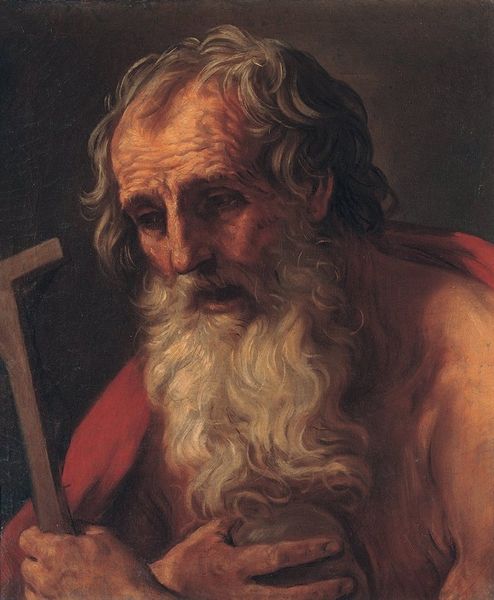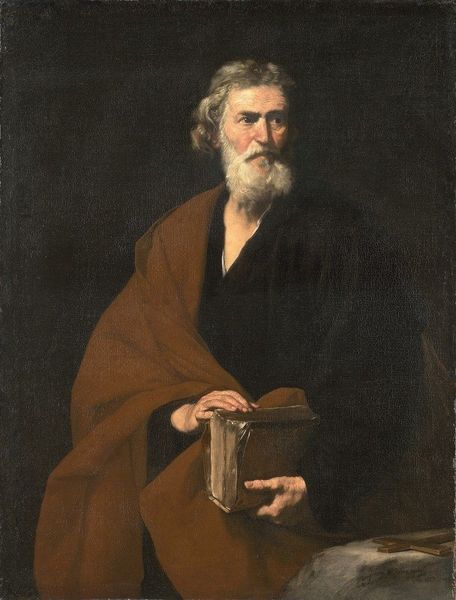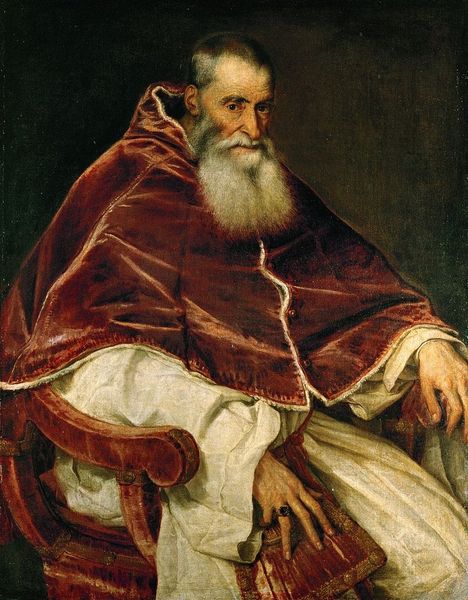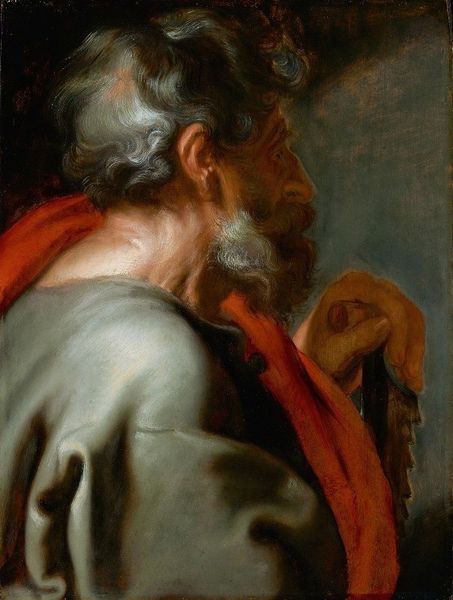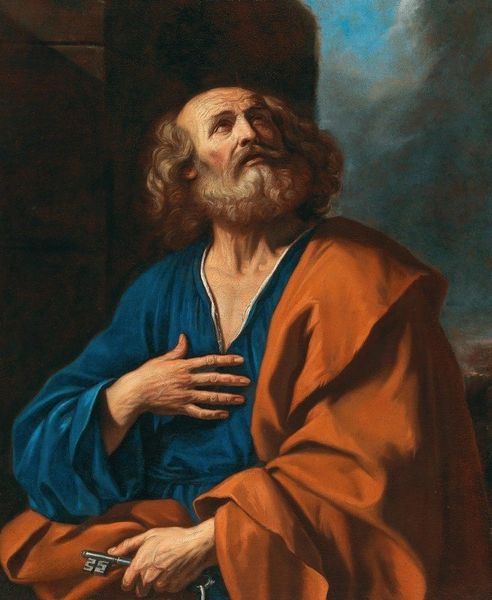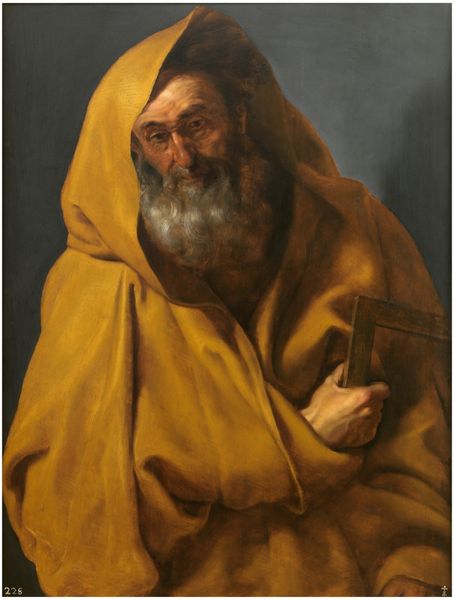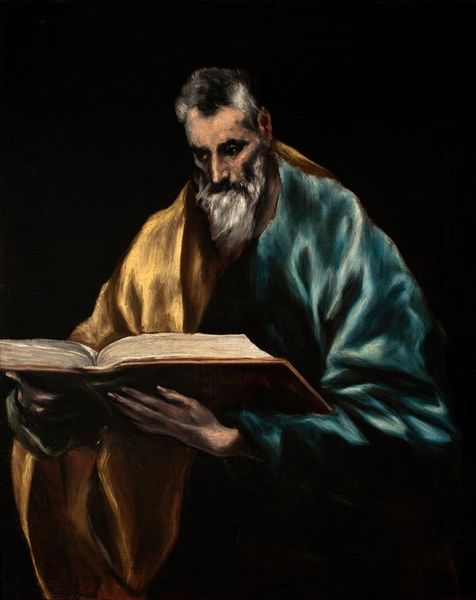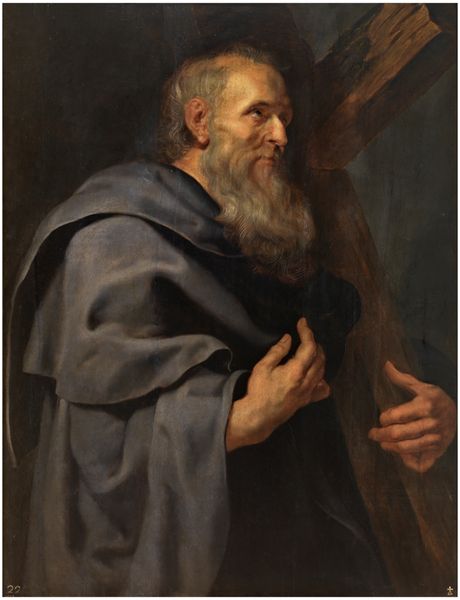
painting, oil-paint
#
portrait
#
baroque
#
portrait
#
painting
#
oil-paint
#
history-painting
Copyright: Public Domain: Artvee
Editor: This is Peter Paul Rubens’s “Saint Peter,” created around 1616-1618, in oil paint. It’s striking how intensely the saint is gazing. What do you see in this piece? Curator: What immediately grabs my attention is the clear attempt to solidify the Catholic Church’s authority amidst the Reformation. Notice the keys – Saint Peter is often depicted with them, representing his role as the gatekeeper of Heaven, and by extension, Papal authority. This was a crucial image for the Counter-Reformation. Editor: So, it's more than just a portrait of a religious figure; it's a statement about power? Curator: Exactly. The Baroque style itself – the dramatic lighting, the rich colors – contributes to this. Rubens was commissioned to produce artworks for Catholic churches as tools to evoke an emotional response from viewers and strengthen faith. The idealization of St. Peter here is no accident; it reinforces the power of the church he represents. Do you notice the gaze? Editor: Yes, he’s not looking directly at the viewer. He’s looking towards something else. Curator: Indeed, a divine inspiration perhaps. Paintings like this reinforced a strict social hierarchy. The art wasn't simply about faith; it was about maintaining established power structures within society. Editor: That's a perspective I hadn't considered before. I was focused on the religious aspect but you are shedding a new light on power dynamics. Curator: Context is everything. Art is rarely created in a vacuum. It reflects and often reinforces the societal norms and power structures of its time. Editor: Thanks for expanding how I see and consider artwork in relation to broader forces.
Comments
No comments
Be the first to comment and join the conversation on the ultimate creative platform.
